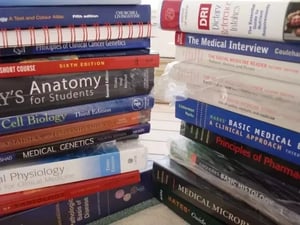Cardiology is typically a favorite topic for most students. The heart is one of the most revered organs and the majority of students are taught baseline information...
What Exactly is a Nephron?: A Guide to Physiology on the MCAT
 Just as on every other standardized admissions test, there is much debate as to the utility of the information examined on the Medical College Admissions Test (MCAT). The Biological and Biochemical Foundations of Living Systems Section of the exam is arguably the most pertinent to future medical education endeavors. Included in this section is introductory anatomy and physiology of the cardiovascular, musculoskeletal, integumentary, and genitourinary systems. These topics, while challenging, are fundamental to a strong foundation when entering medical school. In addition, these are the questions that tend to be integrative and aid students in reaching the top percentiles on their MCAT. Below we will discuss an approach to learning anatomy and physiology for the MCAT.
Just as on every other standardized admissions test, there is much debate as to the utility of the information examined on the Medical College Admissions Test (MCAT). The Biological and Biochemical Foundations of Living Systems Section of the exam is arguably the most pertinent to future medical education endeavors. Included in this section is introductory anatomy and physiology of the cardiovascular, musculoskeletal, integumentary, and genitourinary systems. These topics, while challenging, are fundamental to a strong foundation when entering medical school. In addition, these are the questions that tend to be integrative and aid students in reaching the top percentiles on their MCAT. Below we will discuss an approach to learning anatomy and physiology for the MCAT.
Use Diagrams
As a first-year medical student who just finished her renal physiology and pathology course, I can attest to the difficulty of understanding the urogenital system. One method I found to be extremely helpful in learning nephrology during my dedicated MCAT study time and this past block in medical school was to utilize diagrams. The nephrons are essentially a giant plumbing system in the body, so it would make sense to draw yourself a schematic or diagram to give yourself an idea of where things occur. I liked to draw the nephron similar to a lot of diagrams seen in MCAT preparation books, drawing the filtrate system from the glomerulus all the way to the collecting duct. Then I would overlay the counter current blood supply. After that, I would draw in the movement of ions and water throughout the sections of the nephron. In medical school, I added to this and wrote the names of the pathologies that occurred in different locations of the nephron such as Bartter’s Syndrome in the thick ascending limb of the loop of Henle. In addition, I also wrote the names of drugs or drug classes where they acted, such as loop diuretics in the thick ascending limb of the loop of Henle. I would then work to redraw this diagram and label it by memory. If you are able to have a blueprint of a system in your head, it is much easier to organize and recall facts on test day. Here is a great example of a diagram for the MCAT.
Be the Teacher
Another great way to apply this principle is teaching others. During my MCAT, my peers and I would get together periodically and run through the material that we had covered that week. As we went through the material, someone would inevitably voice a lack of understanding of a concept. At this point someone would jump up to the white board and diagram the concept out. I still apply this learning process in my medical education today. This system actually benefits both individuals. The teacher is having to recall the concept, which tests their understanding and brings to light any concepts they are struggling with through the corrections of the group. The individual being taught also gets to examine the concept in a new light; often our peers are able to reach us on a conceptual level that can be more effective than that of someone who has mastered the topics long ago.
Break It
A method often used by both premedical and medical students is to ‘break’ the model. For example, if I knocked out a part of the nephron such as the sodium-potassium pump, what would be the effects on the rest of the nephron? How would it compensate or respond? Examining your knowledge on a second order allows you to test the bounds of your understanding beyond memorization. In addition, it will build a learning system that is sustainable throughout medical school. Organ systems and pathologies are often taught first by what is ‘normal’ and then what abnormal looks like and how we name and identify the abnormal. Testing and learning through second order questions is what will ultimately allow you to score in the high percentiles on the MCAT and cause these concepts to develop long term, aiding you in medical school.
Anatomy and physiology are difficult subjects for most students. Take the time to master the Biological and Biochemical Foundations of Living Systems section on the MCAT and it will serve you well for your medical school courses. These topics are the most similar to concepts covered in medical school. Hopefully, this learning experience is an enjoyable time to delve into the ideas that you are most excited about learning in your future career as a physician.
About the Author
Jordan S. is a current medical student, and one of our most experienced MCAT tutors. Click here for more information.
